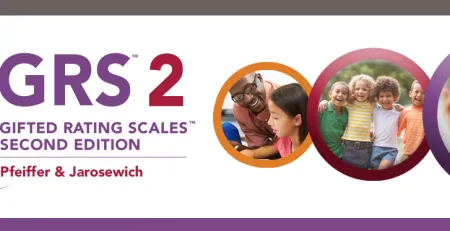How Local Norms Play An Important Role In Identifying Gifted Students?
Achieving equitable representation in gifted programming of students from diverse cultural, racial, ethnic, linguistic, or socioeconomic backgrounds, or from those who have had limited or different educational experiences, is an ongoing multidimensional issue. There are several factors that must be taken into consideration when developing practices that align with equitable identification and several key decisions must be made at every step of the identification process.
- Select your measures.
- Determine who is being selected for testing (i.e., universal screening or nomination).
- Decide how to compare the students’ data to a reference sample (i.e., use of national versus local norms).
Let’s focus on the last technique, using local norms. Why are they important in improving equitable identification?
How is a local norm different than a National Norm?
National norms compare a student’s performance to a sample of students of the same age or grade that have been tested using the same measure across any given country. Local norms are used when a student’s scores are compared to students of, for example, the same grade, in the same school building or district. These two methods answer two different questions, respectively: “What score does a student earn in relation to a representative sample of students the same age across the country?” and “What score does a student earn in relation to the local population (e.g., within a school building or district)?”
When should you use a local norm?
Equitable representation is not only affected by the type of tests that are used for identification but also by how these tests are used (Peters & Engerrand, 2016). The NAGC (2019) states that “Students with gifts and talents perform—or have the capability to perform—at higher levels compared to others of the same age, experience, and environment in one or more domains” (p. 1). The comparison to “others of the same age” can be accomplished by a local or national point of comparison, such as a normative or local reference sample. It is important to note that the local sample should be, at a minimum, the entire grade within a school building (i.e., universal testing). Some researchers suggest that national norms are appropriate when the demographic composition of the school building and/or district resembles the U.S. population (Peters et al., 2019). However, others suggest that in contexts where the school building and/or district’s population is economically, linguistically, ethnically, and/or racially diverse, and differs markedly from the national population, local norms are useful for comparing a student’s score to a sample of students that more precisely reflect the characteristics of the community
How do scores differ between building-level and district-level local norms?
A student’s Local Norm Scores based upon individual school buildings can be different than their Local Norm Scores based upon a school district. School building-level Local Norm Scores indicate what score a student achieved in relation to the local school’s population, while district-level Local Norms Scores indicate what score a student achieved in relation to the local district’s population. When a school building is more diverse or does not have the same representation as the district, then it can be more useful to examine the individual school building norms to ensure a fair comparison of a student to their peers. In contexts where the school building and/or district’s population is diverse compared to national norms, local norms are useful for comparing a student’s score to one that more closely reflects students in the local community of learners.
How do the students included in the local norm sample affect student scores?
Most local norms compare a student to all students within the same grade in the same school building, subdistrict (a subset of the district [e.g., Title I schools vs. Non-Title I schools]), or entire school district. This comparison represents the standing of a student to the local community. That is, the reference group is not limited in any way (e.g., only gifted students).
The composition of the local norm group is important. First, the sample used to create a local norm should be reasonably large (i.e., greater than 100 students) to ensure variability in responses, and second, it should adequately represent the local demographics. The local norm should also be inclusive and based on universal assessment of all students within a grade, not just those who have been previously screened in any way (e.g., a rating scale or teacher nomination). For example, if the goal is to have a local norm for Grade 2 students, then all Grade 2 students should be tested.
Local norms are not a “silver bullet” that will solve for all underrepresentation in gifted education. They are, however, a relatively easy way to improve on this problem. Another way to help improve representation is to use the Naglieri General Ability Tests. The Naglieri General Ability Tests–Verbal (Naglieri & Brulles, 2021), Naglieri General Ability Tests–Nonverbal (Naglieri, 2021), and Naglieri General Ability Tests–Quantitative (Naglieri & Lansdowne, 2021) were designed to remove cultural influences, allow students to solve problems regardless of the language they speak, and significantly reduce the amount of formal knowledge required so tests measure how well students ‘think’, rather than what students ‘know’. The Naglieri General Ability Tests automatically scores students’ performance using local norms, providing school administrators with multiple scoring options at the click of a button. For more information on these tests, please visit MHS’ Gifted and Talented Hub.










